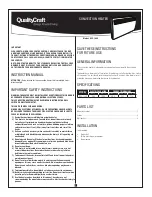
INSTALLATION
Installation
14
|WPL ICS classic | WPL IKCS classic
www.stiebel-eltron.com
Making the push-fit connection
The connector must be in its relaxed position before the pipe is
inserted. In this position, there is a small gap between the screw
cap and main body.
26
0
3
01
0
69
3
3
1
2
4
1 Retainer
2 Screw cap
3 Gap between screw cap and main body
4 Main body
26
0
3
01
0
69
3
Pipe Ø
22 mm
Depth of insertion A
33,3 mm
!
Material losses
Pipe ends must be deburred.
f
f
Always use a pipe cutter to trim pipes.
f
f
Push the pipe past the O-ring into the push-fit connector
until it reaches the prescribed insertion depth.
f
f
Tighten the screw cap by hand against main body as far as it
will go. This secures the push-fit connection.
Undoing the push-fit connection
If the push-fit connectors later need to be undone, proceed as
follows:
f
f
Turn the screw cap anti-clockwise until there is a narrow gap
of approx. 2 mm. Press the retainer back with your fingers
and hold on to it.
f
f
Pull out the inserted pipe.
26
0
3
01
0
69
3
10.5 Heating water connection
!
Material losses
The heating system to which the heat pump is connected
must be installed by a qualified contractor in accordance
with the water installation drawings that are part of the
technical guide.
f
f
Before connecting the heat pump, flush the pipework thor-
oughly with suitable water. Foreign bodies, such as welding
pearls, rust, sand or sealant can impair the operational relia-
bility of the heat pump.
f
f
Connect the heat pump on the heating water side. Check for
tightness.
f
f
Ensure that the heating flow and return are connected
correctly.
f
f
Provide thermal insulation in accordance with applicable
regulations.
f
f
When sizing the heating circuit, observe the internal pressure
differential (see chapter "Specification / Data table").
The pressure hoses acting as anti-vibration insulation for direct
connection of the on-site pipework are integrated inside the ap-
pliance.
10.6 Oxygen diffusion
!
Material losses
Do not use open vented heating systems. Use oxygen
diffusion-proof pipes in underfloor heating systems with
plastic pipework.
In underfloor heating systems with plastic pipes that are per-
meable to oxygen and in open vented heating systems, oxygen
diffusion may lead to corrosion on the steel components of the
heating system (e.g. on the indirect coil of the DHW cylinder, on
buffer cylinders, steel radiators or steel pipes).
f
f
In the case of oxygenation, separate the heating system be-
tween the heating circuit and the buffer cylinder.
!
Material losses
The products of corrosion (e.g. rusty sludge) can set-
tle in the heating system components, which may re-
sult in a lower output or fault shutdowns due to reduced
cross-sections.
10.7 Second heat generator
For dual mode systems, always connect the heat pump into the
return of the second external heat source, e.g. oil boiler.















































